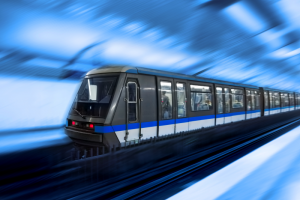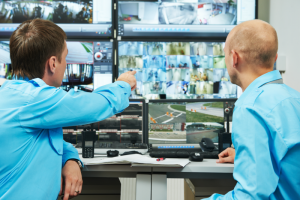Customized solutions for each business
Public space security, such as a city or a metro, or a private space, an industrial or military site, is built with the same market products and requires the same basic functions. However, the equipment used, the operating procedures, the regulations in force, the risk factors and the environmental conditions can be very different.
To display a universal character, the safety information system management tool must therefore provide generic functions, common to all businesses: video recording, visualization and switching, interactive mapping, control / command of field sensors, management alarms.
But it must also be able to integrate the specificities of each operating context, each project, each site; e.g., the reading of license plates will be used in a city for video-verbalization purpose while an industrial site will control authorized vehicles entry.
Our experience combined with constant technological monitoring and our passion for innovation give an exclusive character to our supervision solutions. We develop software extensions (plugins) that allow the best customization of the security systems software used in your command and operating rooms.
IPARTNER continues its developments with the objective to propose the most advanced security supervision solutions: anticipation and prediction of risks, behavioral analysis, optimization of material and human resources, connected objects, integration and mix of technologies related to physical security.
Airports
The airport is a particularly complex technical infrastructure: public area, reserved area, baggage conveyor and sorting, screening inspection stations, queues, runways and aircraft parking lots, passenger parking lots, public transport… So many specific contexts that require specific treatment from the point of view of their safety, for diversified users (airlines, cabin crew, airport company, authorities, security company, parking lot manager, passengers, etc.).
|

|
 |
Entertainment
Stadiums and fan zones, performance halls, museums, gambling casinos, amusement parks and shopping malls attract a large public. Controlling attendance and public traffic, waiting files, protecting valuable goods or nearby parking lots, fighting against theft, fraud or vandalism are attractiveness issues that influence the economic profitability of these momentary places of life.
|
Critical infrastructure
Industrial sites, military installations or OVIs (Operators of Vital Importance) present strong constraints linked to the presence of sensitive, protected information, hazardous materials or vital services provision. Usually closed or isolated, these infrastructures require particularly demanding security architectures (early detection of threats, reinforced access control, anti-drone control, permanent vigilance, day and night, redundancy, degraded mode, etc.).
|
 |
 |
Roads and tunnels
Highways, peripherals of large cities, tunnels are dynamic systems, equipped with a multitude of sensors: weather forecast, traffic measurement, video surveillance, smoke detection, misinterpretation, telecommunications, remote display, dynamic signage, etc. To ensure safety users, operators must react very quickly. The interconnection of road networks militates for various operators’ safety information systems interconnection.
|
Public transport
Urban, rail and maritime transport stations and stations are places of particularly sensitive and vulnerable populations, exposed to acts of incivility, vandalism and terrorism. Their integrated security systems must take into account the variety of fixed or mobile and on-board field devices (video protection, remote display, audio broadcasting, access control, anti-fraud control, protected technical rooms, etc.). This business imposes strict operating methods: predefined schedules, linear configuration, regulations (ISPS) … The security operator must integrate the user’s experience into its multimodal dimension. It must also considerate functional links with the various operating services (traveler information, marketing, maintenance, etc.).
|
 |
 |
Smart city
The urban control room concentrates tools for operating the various protection devices for public spaces, municipal buildings, schools, car parks, pedestrian lanes and areas, traffic lanes, etc. It is generally equipped with video walls, means communication, geolocation with the help of which it coordinates the interventions of the teams of the Municipal Police. It processes residents’ reports and records them in a handbook. He is the link with the various partners: National Police, Gendarmerie, Civil Security, technical and maintenance services of the city, pound. It may also have additional mobile equipment (tactical vests, nomadic cameras) to ensure the safety of major events, demonstrations or VIP convoys. It must be equipped with image distribution gateways to partner authorities. He can optimize his daily or long-term activity based on the analysis of events that have occurred in his territory (prediction, anticipation).
|







